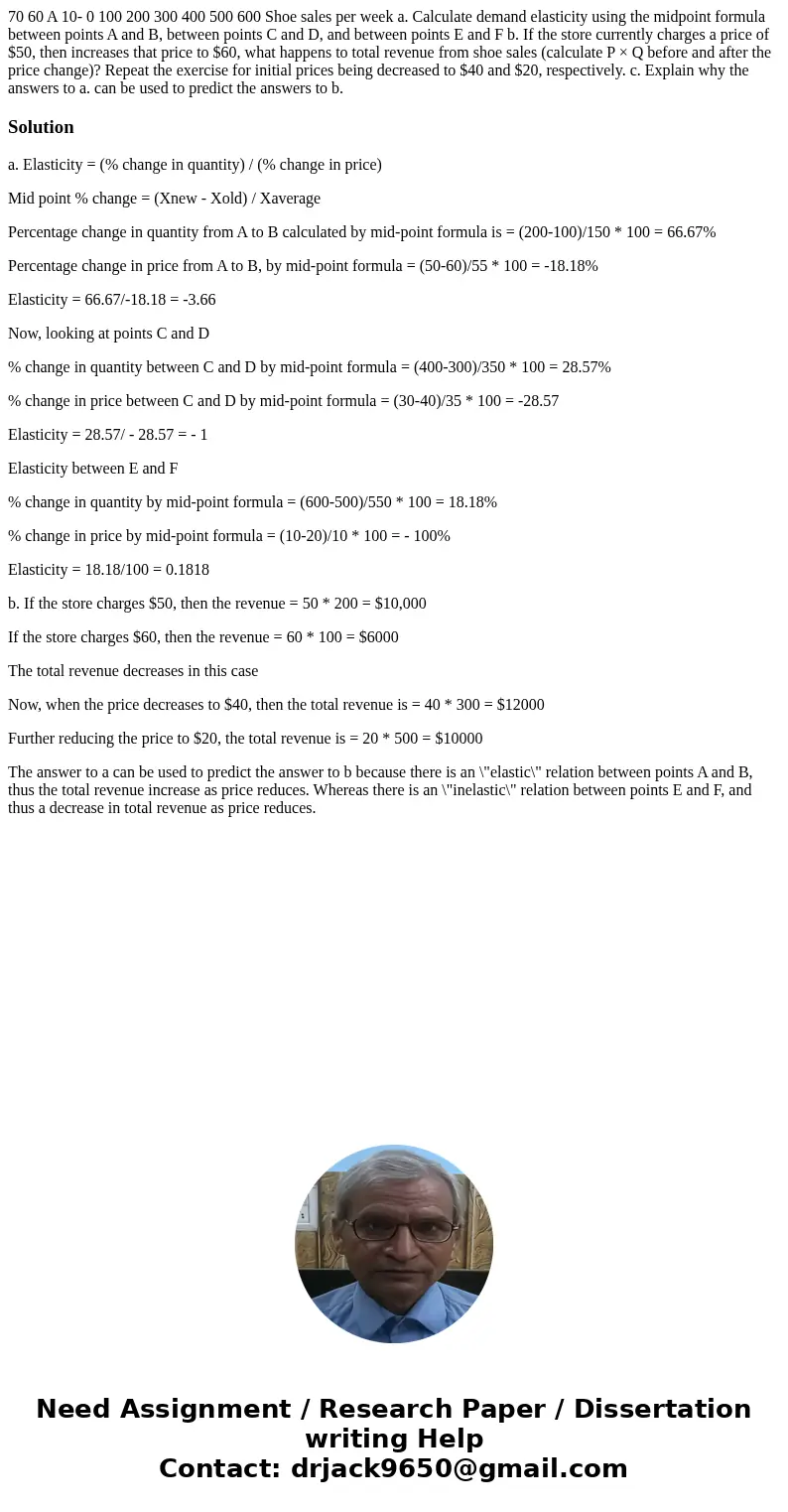70 60 A 10 0 100 200 300 400 500 600 Shoe sales per week a C
Solution
a. Elasticity = (% change in quantity) / (% change in price)
Mid point % change = (Xnew - Xold) / Xaverage
Percentage change in quantity from A to B calculated by mid-point formula is = (200-100)/150 * 100 = 66.67%
Percentage change in price from A to B, by mid-point formula = (50-60)/55 * 100 = -18.18%
Elasticity = 66.67/-18.18 = -3.66
Now, looking at points C and D
% change in quantity between C and D by mid-point formula = (400-300)/350 * 100 = 28.57%
% change in price between C and D by mid-point formula = (30-40)/35 * 100 = -28.57
Elasticity = 28.57/ - 28.57 = - 1
Elasticity between E and F
% change in quantity by mid-point formula = (600-500)/550 * 100 = 18.18%
% change in price by mid-point formula = (10-20)/10 * 100 = - 100%
Elasticity = 18.18/100 = 0.1818
b. If the store charges $50, then the revenue = 50 * 200 = $10,000
If the store charges $60, then the revenue = 60 * 100 = $6000
The total revenue decreases in this case
Now, when the price decreases to $40, then the total revenue is = 40 * 300 = $12000
Further reducing the price to $20, the total revenue is = 20 * 500 = $10000
The answer to a can be used to predict the answer to b because there is an \"elastic\" relation between points A and B, thus the total revenue increase as price reduces. Whereas there is an \"inelastic\" relation between points E and F, and thus a decrease in total revenue as price reduces.

 Homework Sourse
Homework Sourse